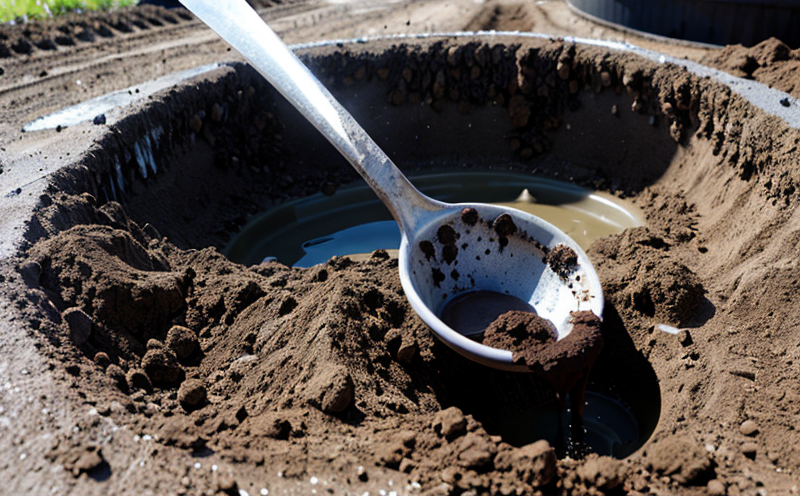ISO 8692 Algal Growth Inhibition by Sludge Extract Test
The ISO 8692 algal growth inhibition test is a critical tool in assessing the environmental impact of sludge and biosolids. This method evaluates how extracts from these materials affect algal growth, which provides insights into potential ecological risks associated with their release or application.
Sludge and biosolids are byproducts of wastewater treatment processes that contain organic matter, nutrients, and trace elements. The environmental impact of these substances can vary widely depending on the composition of the sludge. Algal growth inhibition tests help determine if a particular batch of sludge might pose a risk to aquatic ecosystems when it is discharged into water bodies.
The test method outlined in ISO 8692 involves preparing extracts from the sludge samples and then exposing these extracts to cultures of green algae (Chlorella sp.). The growth rate of the algal culture is monitored over time. If an extract significantly inhibits algal growth, it suggests that the sludge could be toxic or harmful when released into natural environments.
This test is particularly relevant in sectors such as wastewater treatment, municipal utilities, and environmental consulting firms. It helps ensure that the byproducts of wastewater treatment processes are managed safely to protect aquatic ecosystems. Compliance with this test method ensures adherence to international standards for waste management and environmental protection.
Key parameters include the type of algal culture used (Chlorella sp.), the concentration of sludge extracts, incubation conditions, and measurement techniques for algal growth. The method is standardized in ISO 8692, which provides specific guidance on these aspects to ensure consistent results across different laboratories.
The test results are typically expressed as a percentage inhibition rate, comparing the growth of algae exposed to sludge extracts with that of controls not exposed to any extracts. This quantitative measure allows for precise evaluation and comparison between different samples or batches of sludge.
Understanding the algal growth inhibition potential is crucial for effective management strategies in wastewater treatment plants. By identifying which components of the sludge are responsible for inhibiting algal growth, scientists and engineers can develop targeted approaches to mitigate risks. This might involve adjusting chemical treatments within the plant or implementing alternative disposal methods.
The ISO 8692 method is also valuable for research purposes, enabling detailed investigations into how various constituents in sludge affect algal communities. Such knowledge can inform more sustainable practices and help prevent unintended ecological disturbances.
Overall, the ISO 8692 test serves as a cornerstone of environmental protection protocols, ensuring that wastewater treatment byproducts are handled responsibly to safeguard aquatic biodiversity.
Benefits
- Environmental Protection: Ensures that sludge and biosolids do not pose risks to local water bodies when released or applied.
- Regulatory Compliance: Meets international standards for waste management, enhancing compliance with environmental regulations.
- Risk Mitigation: Provides insights into potential toxic impacts of sludge on algae and other aquatic organisms.
- Research Support: Facilitates detailed studies on the composition of sludge affecting algal growth inhibition.
- Decision-Making Tool: Assists in selecting appropriate treatment methods for different types of sludge based on their environmental impact.
Eurolab Advantages
At Eurolab, we pride ourselves on providing high-quality testing services tailored to meet the needs of our clients. Our ISO 8692 algal growth inhibition tests are conducted by experienced professionals using state-of-the-art equipment and adhering strictly to international standards.
We offer a full range of sludge and biosolids analysis, including detailed composition analysis, toxicity assessments, and environmental impact evaluations. Our expertise in this field ensures accurate and reliable test results that can be trusted for regulatory compliance and scientific research.
Our laboratories are equipped with advanced instrumentation capable of handling complex samples while maintaining strict quality control measures. This allows us to deliver consistent and reproducible results every time. We also offer comprehensive reporting services, providing clear interpretations of the data along with actionable insights for our clients.
In addition to technical excellence, Eurolab is committed to supporting sustainable practices in waste management. By offering these tests, we contribute to reducing environmental impacts associated with wastewater treatment processes and promoting responsible disposal methods.
International Acceptance and Recognition
The ISO 8692 algal growth inhibition test has gained widespread acceptance across many countries around the world. It is recognized by regulatory bodies like the US Environmental Protection Agency (EPA) and the European Commission as a standard method for assessing the environmental impact of sludge.
Many nations use this test to ensure that their wastewater treatment facilities comply with international standards set forth by organizations such as ISO, ASTM, EN, IEC, etc. This global consensus highlights the importance of using standardized methods when evaluating the environmental impacts of industrial and municipal waste streams.
The standardization of tests like ISO 8692 promotes consistency in measurements across different regions, making it easier for countries to share best practices and collaborate on environmental protection initiatives. It also helps build trust among stakeholders involved in managing wastewater treatment byproducts.
Given its broad acceptance, the ISO 8692 test has become an essential tool for industries dealing with sludge and biosolids. Compliance with this standard demonstrates a company’s commitment to sustainable practices and responsible disposal methods.





